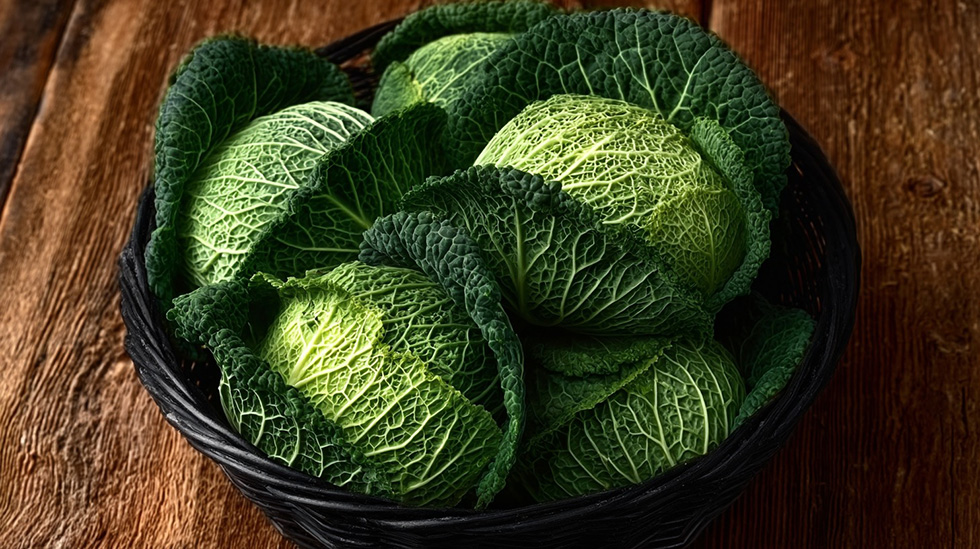On what tree does Savoy cabbage grow?
The Savoy cabbage (Latin for Brassica oleracea convar. acephala var. sabauda ) is one of those vegetables that you either love or forget for years because of your childhood memories of going out. But this deep green beauty with its curly leaves is much more than just a simple savoy cabbage stew. It is also known as green cabbage, especially abroad, but the name ‘savoy cabbage’ is most commonly used here.

A vegetable native to Europe, it was already highly prized by the ancient Romans. According to some sources, kale was grown in monastic gardens as early as the Middle Ages, not only for its nutritional value but also for its medicinal properties.
How important is it in the kitchen?
Evaluation: 4/5
It may be a little underrated in Hungarian cuisine, but if you know what to do with it, you’ll quickly get hooked. It’s great in soups, stews, casseroles, or even stuffed or wok-fried. It is highly prized in European gastronomy: the French, Italians and Germans also use it frequently, especially in winter dishes.
Which parts can be eaten?
The most valuable parts of Savoy cabbage are the leaves. These are best eaten freshly picked and tender, but even the tougher outer leaves can be used for cooking – they make the best casseroles or stuffed Savoy cabbage, for example. The stems are edible, but tough and fibrous, and are best used in soup stocks. The root is not eaten and as the leaves are prone to external contamination, a thorough washing is always recommended.
What are the health benefits?
Savoy cabbage is full of valuable nutrients: it is high in vitamin C, vitamin K and fibre. It has calcium, folic acid and is rich in antioxidants. According to traditional medicine, it has anti-inflammatory properties, aids digestion and can even help regulate blood sugar levels. It’s also low in calories, making it a great choice for dieters!
Growing characteristics
Savoy cabbage is a cold-tolerant vegetable, so its season typically runs from autumn to early spring. It is grown outdoors and does not require a greenhouse environment. It is widely grown in Europe, particularly in Germany and Poland, but also has a strong tradition in Hungary. Domestic produce is most commonly found in shops and markets from October to February, while Italian or Spanish imports tend to be more common in the summer months.
How to choose good quality Savoy cabbage?
When shopping, look out for these:
- The leaves should be bright green, intact and shiny.
- Avoid pieces with yellowing or wilted outer leaves.
- When you press the head, it should be firm, not soft or spongy.
- A medium-sized head is ideal – too large is often too fibrous.
Storage tips
It will keep for up to 1-2 weeks on the bottom shelf of the fridge, wrapped in an airtight bag or newspaper. If you’re only using a few leaves, it’s a good idea to wrap the rest in foil, but don’t seal it completely – that way you won’t get soggy.
Savoy cabbage in the kitchens of the world
The French like to use it in their winter dish potée, the Italians, for example, cook it in Tuscan ribollita soup, while the Germans often combine it with smoked meat and potatoes. It is less common in Asian cuisine, but is also increasingly used in wok-fried dishes.
Best known recipe: Savoy cabbage casserole
The casserole is a true classic! A layered delicacy with minced meat, rice, sour cream and of course steamed kale. A great weekday lunch or dinner, and perhaps even better the next day. 😋
Tips for using it in the kitchen
Kale is a fantastic variety:
- In soups (kale soup, Frankfurt soup)
- For casseroles
- Wok fried with garlic and soy sauce
- Stuffed like stuffed cabbage
For seasoning, try the following:
- Garlic
- Marjoram
- Cumin
- Black Pepper
What you should avoid: too strong, sweet spices (e.g. cinnamon, nutmeg) rarely go well with it. The characterful, slightly earthy taste of kale should be taken in a more savoury, spicy direction.
Summary
Savoy cabbage is not just a winter saviour, it’s a versatile, nutrient-rich vegetable that can be used in any kitchen. If you’ve been shying away from it, give it a try – it might just be your favourite! 🥬💚
